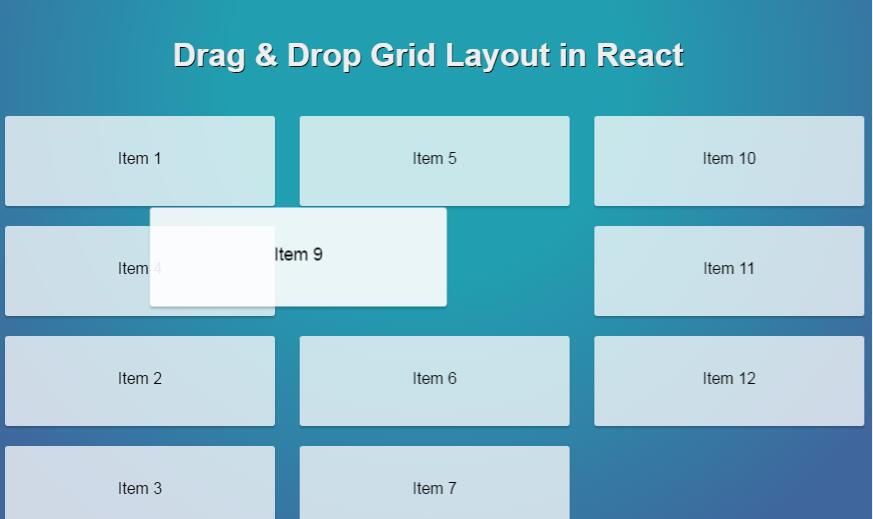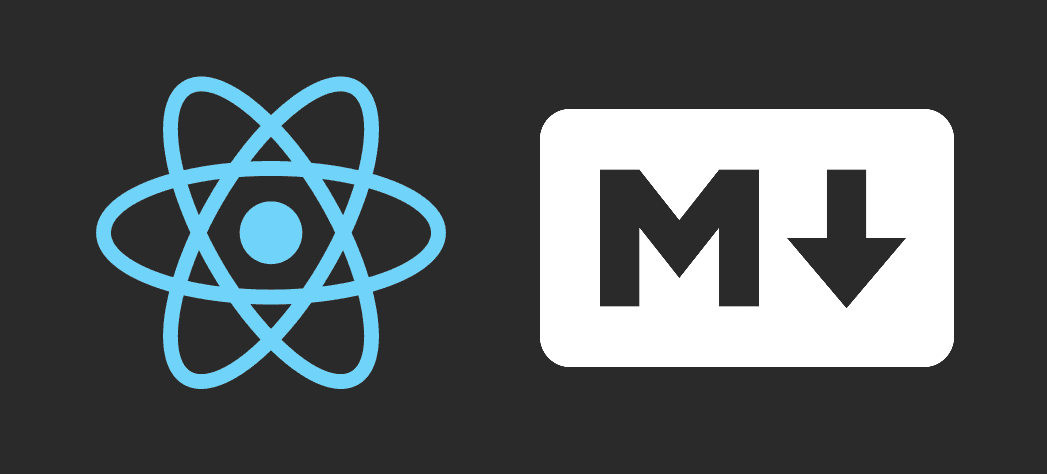Markdown React Native
- Markdown React Native Free
- Markdown Editor React
- React Native Markdown Input
- React-native-markdown-renderer Npm
- Markdown Editor React Native
- React Markdown To Html
- React Markdown Component
React Native Markdown Package is a library for implementing markdown syntax in React Native.
Author: Nader Dabit Year: 2019 Publisher: Manning ISBN 051 Pages: 320 Language: Eng Format: PDF Size: 7 Mb Content: React Native in Action teaches you to build high-quality cross-platform. Learn how to render plain markdown into React components using the React Markdown Component. Fetch the markdown (.md) files from github and read it offline.Available documents (Laravel, ES6, React Native, Airbnb Javascript Style Guide). Open for all to add new docs.Add more docs.
Getting started
To install this library, you can easily run this command from your project folder.
npm i react-native-markdown-package --save
Check this simple app for implementation example Example app
How to use
What you need to do is import the react-native-markdown-package module and then use the<Markdown/> tag.
How to use?
Here we are, take a look at this simple implementation:
Properties
styles
Default style properties will be applied to the markdown. You could replace it with your preference by adding styles property like the example above.
onLink
This prop will accept a function. This is a callback function for any link inside markdown syntax, so you could costumize the handler for onClick event from the link.
onLinkCallback should be a function that returns a promise.
NOTE :Email link (mailto) could be tested on real device only, it won't be able to test on Simulator as discuss in this StackOverflow

Thanks To
I'm very thankful to the contributors who help me to make this libary better:
This project was actually forked from lwansbrough , with some enhancements below :
Styling method.
Now you can easily add styling on each syntax, e.g. add different color either in
strong,header, or another md syntax. All default styles in this package is also already moved to new filestyles.js.Refactoring some codes to adopt ES6 style.
Refactor index.js using ES6. :)
Support
Sublist.In the previous library, you couldn't add sublist. It was not supported. But now, this feature already added here. Please follow the instruction above...
Latest release:
add Proptypes Support, (1.0.1)
Fix deprecated View.proptypes and update Readme (1.0.3)
Upgrade dependency, lodash, avoid vulnerabilities (1.1.0)
Fix performance issue, import only necessarry function from lodash (1.1.1)
Finalize Blockquote feature (1.2.0)
Update Docs (1.2.1)
Allow user to include plain text from variable using back tick (1.3.3)
New feature, codeblock (1.4.0)
New feature, on link handler (1.4.3)
Bug fix, Strike through issue (1.4.4)
Default Style for outer View, remove deprecated ComponentWillMount (1.5.0)
Allow user to replace default rules, update default font family for
codeBlockon android (v1.6.0)Update to use latest simple-markdown (v1.7.0)
Update to use latest simple-markdown (v1.8.0)
Happy Coding... ;)
Currently, React is considered one of the most demandable JavaScript libraries. Such famous web apps as Walmart, Netflix, Airbnb, Bleacher Report, Imgur, HelloSign and many others use React. In addition, this JS library is maintained by numerous corporations and private developers, as well as the prominent social networks, like Instagram and Facebook.
The product named “React Native” was released 2 years later after the first announcement of React JS. Although this mobile app development framework is based on the same principles, there are certain differences between ReactJS and React-Native in a practical sense.
In order to understand the essence of React Native vs React JS, we should look at the pros and cons of these two technologies for web development.
React Native Review

React Native is a framework that combines the development of native app components with the JavaScript user interface development. The native modules for Android and iOS are deployed for implementation of heavy features, while JavaScript is used to write the rest of the code. PhoneGap is the closest React Native alternative that is used to build mobile apps with JavaScript. However, unlike React Native this alternative uses a WebView mobile engine to wrap code.
Pros of React Native
Since this framework is one of the most effective tools for the development of mobile applications, let’s look at its pros and cons.
JavaScript
React Native uses the most popular programming language. Moreover, the main benefits of JS and React JS are combined. This results in faster and more effective work of developers since there is no need to restart an updated application for changes, but simply refresh the page.
Android and iOS support
Markdown React Native Free
React Native was initially developed by Facebook for iOS. Now, the framework supports both operating systems. For example, the Android and iOS versions of Ads Manager application by Facebook were created using this web app framework.
Improved performance due to the native modules and controls
Unlike most cross-platform frameworks, React Native uses native APIs to render the code components instead of WebView. This allows the direct and independent code rendering hence increases the performance. For example, if you need to add the functionality of Google Maps to your app, due to React Native the plugin will be linked with a native module.
No rewriting to augment an existing app
React Native offers a great feature that allows incorporating the components into the code of your existing app. There is no need to rewrite the code of your app built with Ionic or Cordova. Use a plugin to reuse the existing code.
Features of React JS to improve UI
React Native contains all the advantages of React JS since it uses it as the JavaScript library. Hence, if you need to build a cross-platform application, the knowledge and skills in the native platform’s language are not required. A developer just needs to be familiar with the React syntax and know oats in JavaScript.
User interface is the focus
React Native is aimed at building a mobile UI. Due to this fact, React Native acts more like a JavaScript library if compared to the similar frameworks like MeteorJS or AngularJS. This focus results in higher responsive user interface causing the quicker load time of an app.
High efficiency of native app development
In general, the native app development is characterized by poor developer productivity and inefficiency. React Native disproves all these flaws, and provides the agility and speed of the web app development.
Cons of React Native
Slow SDK Updates
The update of SDK of Android or iOS is a trouble for React Native resulting in slowing down the update. The synchronization of new SDK and React Native usually takes much time, because the new software requires the integration with a code library. Every part of the API should be updated at once that is almost impossible despite all efforts of the developers.
Markdown Editor React


Outside components
Although many iOS and Android native modules are available by default, the number of outside components of React Native is limited. This may cause troubles is some community-built module will not be supported by the framework.
React JS Review
This JavaScript library is also referred to as React or React.js. The intended purpose of React JS is to build fast user interfaces. This technology makes the web pages highly dynamic and responsive using the speed of JavaScript.
Facebook released this product in 2013. Since ReactJS had an open access, it gained much popularity among the developers. Another attractive feature of this library was an unordinary approach to UI programming. Now, ReactJS is a popular tool to build user interfaces and web apps.
Pros of React JS
High performing websites
React Native Markdown Input
The main advantage of React JS is the use of virtual document object model (DOM) instead of direct interaction with it. DOM is a logical structure of data outputs and inputs in a tree form. We see DOM in the browsers. A lot of other libraries like a React JS alternative jQuery work with the real DOM. Since React uses the DOM’s abstract copy, it allows creating a highly-dynamic user interface.
React-native-markdown-renderer Npm
As a result, the work with UI-objects accelerates and real-time applying changes are enabled. The performance and programming are made faster.
Reusing code components
ReactJS provides a significant time-saving effect by reusing code components of different levels. Designers have to reuse constantly the same assets. Reusing eliminates such necessity and improves a design efficiency. The same thing but more difficult relates to programming. Every change can influence the other components and their functionality. ReactJS isolate each component preventing any effects of changing a certain component. The programming becomes more comfortable and precise while the components are reused and do not depend on each other changes.
Facilitated migration
Migration of web app developers can be slow or quick depending on the needs. It is possible because React JS can be implemented into any existing page. However, a runtime library is required to run React JS efficiently.
Stable code by downward data flow
Downward data binding is provided by React JS to ensure a stable code. Unlike the complex data flow structures in view-model systems React JS eliminates any possible effects of child elements against parent ones. Only one downward direction of data flow is used. Any object can be changed without effect to parent data by simple modification of its state and application of updates.
Improved debugging speed
The process of identification of errors is facilitated due to the set browser developer tools providing more precise data regarding the code for generating a user interface.
Open-source library
This JavaScript-connected project was the first open source release by Facebook. Free access always entails numerous benefits including a plenty of additional tools and useful applications from third-party developers.
Cons of React JS
Accelerated development
Markdown Editor React Native
It may sound weird but too fast development of a certain product can be a disadvantage. Naturally, the environment experiences constant changes causing the developers to accommodate and relearn the new peculiarities or features of tools or products. However, if a pace of development is rather high, it provokes discomfort for the members of the development community.
JSX as an obstruction
Many developers dislike the feature of mixing JavaScript and HTML that is enabled due to the JSX syntax extension. Despite the certain JSX benefits, some designers and developers claim that JSX is a serious flaw due to its complexity and necessity to learn.
Poor documentation
React Markdown To Html
Due to the fast update and development of the React technologies, there is a lack of proper documentation. The constant releases of new tools aggravate the problem with documentation.
Conclusion
React Markdown Component
According to the developers who actually use React Native and React JS both these technologies have mostly positive feedbacks. The users admit high efficiency, great usability, and easy steep learning curve. It is not about comparing React JS vs React Native and choosing the best tool, while the essence of the tools is different. However, if you are familiar with React JS, you will have no troubles with mastering React Native.
